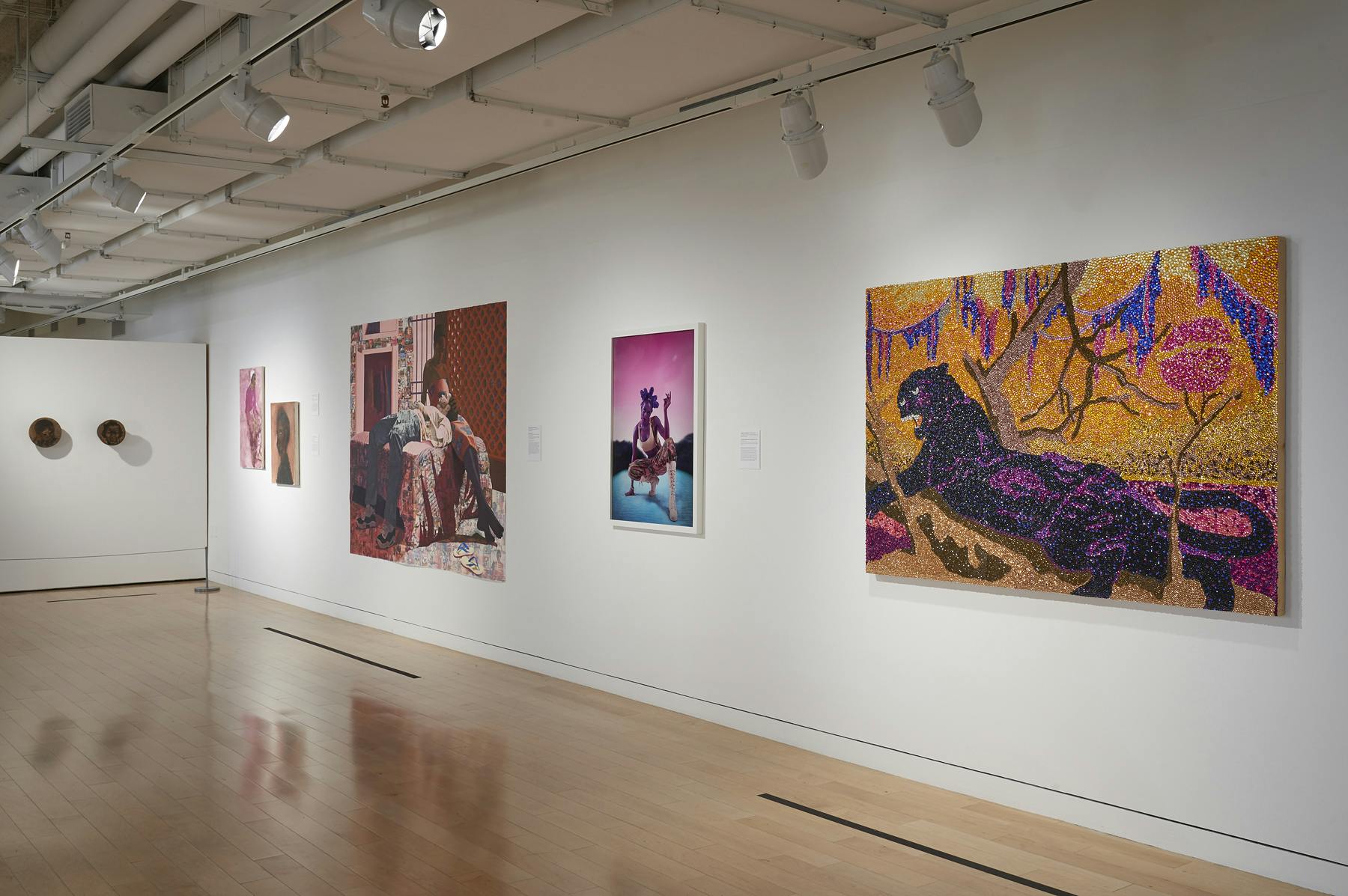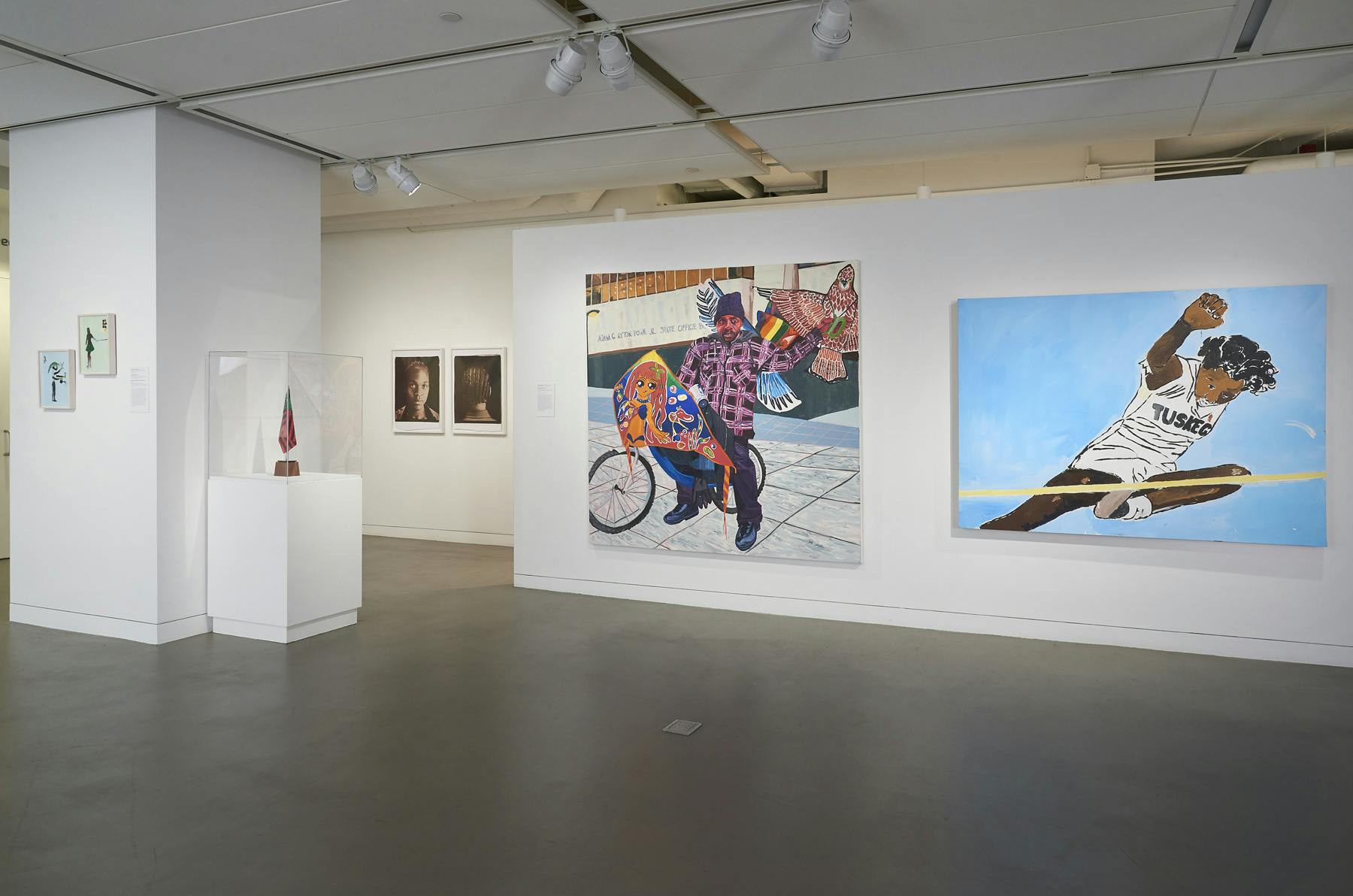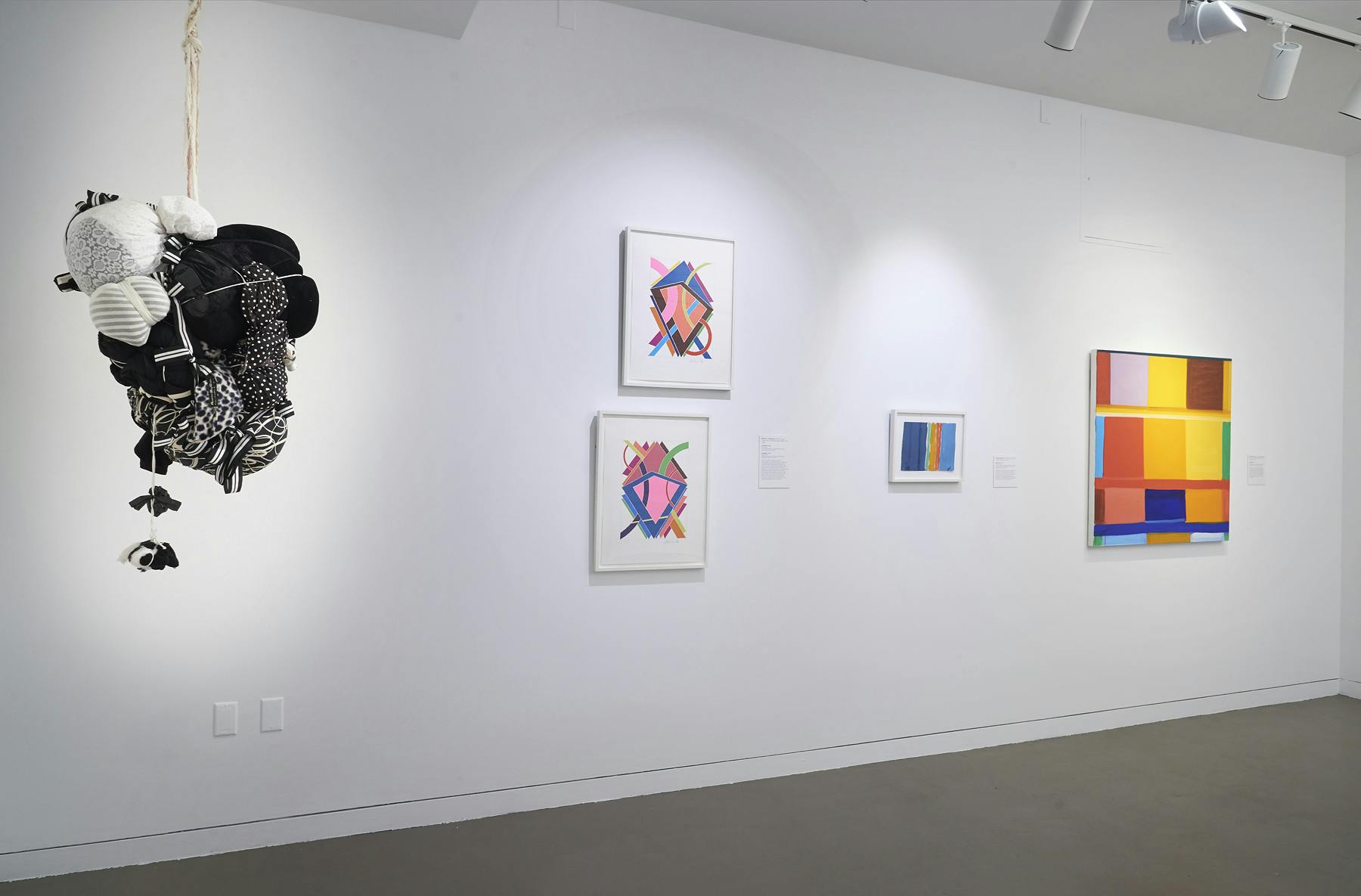Black Refractions


The Studio Museum was founded in 1968 amidst an atmosphere of national and global activism. The year brought the collective shock over the assassinations of Martin Luther King Jr. and Robert F. Kennedy, as well public outrage and demonstrations against the Vietnam War. Black liberation took center stage at the Summer Olympics in Mexico City when Tommie Smith and John Carlos raised their fists in the Black Power salute in solidarity with ongoing struggles against institutional oppression. At the same time, Black artists were questioning the art world’s status quo. The founders of the Studio Museum were a diverse group of artists, activists, and philanthropists, all committed to creating an institution in Harlem that foregrounds the role of Black artists and education. Several of these founders are represented in the exhibition, including Betty Blayton-Taylor, who served on the Museum’s founding Board, and members of the collective Spiral— Charles Alston, Romare Bearden, Norman Lewis, and Hale Woodruff— who met regularly to discuss pressing social issues.
The artworks in the exhibition show the development of the Museum from 1968 to the present moment, particularly the Studio Museum’s longstanding commitment to emerging artists of African descent. Over the years, the Museum has earned recognition for its catalytic role in advancing the work of visual artists through the Artist-in-Residence program. One of its founding initiatives, the program was established to provide studio space for artists to work and engage with a larger community. To date, more than a hundred artists have participated in the program, and more than twenty of these artists are represented in Black Refractions.
Along with the key moments of institutional development are the rich narratives that emerge from the Museum’s permanent collection, which consists of more than 2,500 works by close to 800 artists working in a variety of media, including painting, sculpture, photography, video, and installation. The artworks in Black Refractions have never before been exhibited together, allowing new conversations to emerge across time periods and geographic locations. Photographs by Seydou Keïta featuring carefully posed and decadently attired sitters show the visual vocabulary of West African studio photography of the 1950s, while Dawoud Bey’s 1970s photographs depict people going about their everyday lives against a backdrop of Harlem. Both artists do more than simply document; they capture personalities and atmospheres while working with their distinct individual styles. Both Otobong Nkanga and Fred Wilson contend with distributions of labor and interconnected cartographies. In Nkanga’s watercolor, House Boy (2004), a multitasking and faceless figure is depicted as bound together by a web of labor obligations, while in Wilson’s sculpture Atlas (1995), a Black ceramic figurine of domestic servitude bends under the weight of a globe on which the artist has traced diasporic pathways. Kerry James Marshall turned his attention to the Black figure during his residency at the Museum. His work Silence is Golden (1986) shows a Black figure nearly invisible against a dark background, alongside the colors of pan-African ideology. In Juliana Huxtable’s Untitled (Psychosocial Stuntin’) (2015), the artist wears symbols alluding to Black militancy and is posed between mountains of Black panther fur, referencing Black nationalism. Both Marshall and Huxtable establish themselves as a part of a similar lineage of inspiration.
Black Refractions comes at a moment of reflection and expansion for the Studio Museum.
These works, along with many others in the show, offer visitors different perspectives on Blackness and how it has been, and could be, framed within an institution and beyond the museum setting. The open framework of the show allows for new connections to emerge continuously as the exhibition travels to new locations and is contextualized by new audiences. In the words of Studio Museum Director and Chief Curator Thelma Golden:
There is no single narrative—art historically, territorially—
that can be applied to the work of Black artists …
that insight has been one of the most significant products
of deep intellectual thinking: how important it is to have
multiple narratives and how they can play out. For
example, a chronological approach can be an effective
way to organize, but a false means to understand the
history.... To me it was important to offer the idea that
there was no single narrative and that the exhibition
could have different forms. Many shows privilege a
thematic approach across media to allow an intergenerational
way of seeing and also acknowledge that when we
write these art histories, they are not closed. 1
Black Refractions comes at a moment of reflection and expansion for the Studio Museum. The exhibition reveals the strength and depth of the Studio Museum’s collection, which grew out of the needs of the immediate community during a tumultuous artistic and political moment in U.S. history. As the exhibition continues its journey, it is important to reflect on the moments that led to the founding of the Museum, the climate in which it is now being presented, and how these lessons can be channeled as we look toward the next fifty years and beyond.
—Mia Matthias with Connie H. Choi
Dates
The Museum of the African Diaspora, San Francisco, CA (January 16 – April 14, 2019);
Gibbes Museum of Art, Charleston, SC (May 24 – August 18, 2019);
Kalamazoo Institute of Arts, MI (September 13 – December 8, 2019);
Smith College Museum of Art, Northampton, MA (January 17 – April 12, 2020);
Frye Art Museum, Seattle, WA (May 9 – August 2, 2020);
Utah Museum of Fine Arts, Salt Lake City, UT (August 28 – December 13, 2020)
Notes
1. “In Conversation: Thelma Golden, Connie H. Choi, and Kellie Jones,” in
Black Refractions: Highlights from The Studio Museum in Harlem (exhibition
catalogue) (New York: Rizzoli Electa in association with American Federation
of Arts, 2019), 24.


